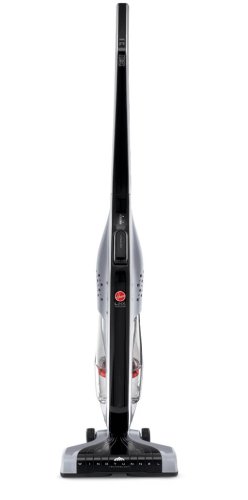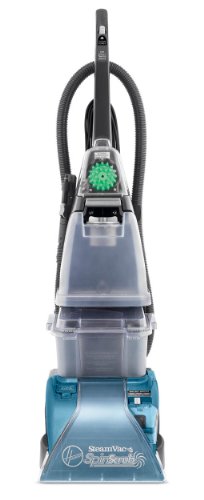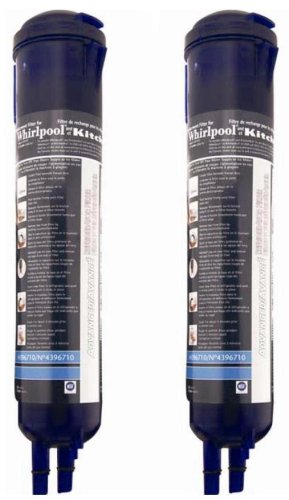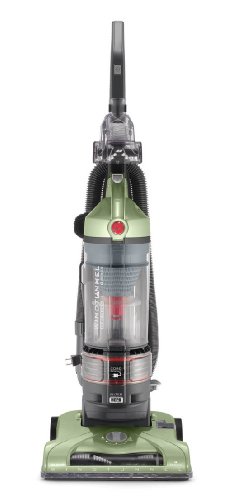Understand Your Generator Options
Power generators have two main components. A motor that burns fuel to supply power and a generator head that turns power into electricity. Together, the motor and the generator head comprise a standard generator. Generators come in two basic designs: standby generators and portable generators.
Portable generators:
Portable generators provide power in remote locations, such as construction sites, for short periods of time. In a pinch, they can also power essential equipment during a power outage. Portable generators tend to be smaller and less expensive than standby generators. They have built-in fuel tanks, which allow them to run anywhere, and standard power outlets that can plug into ordinary extension cords. Portable generators should never be run indoors as they can produce fumes that can cause serious health problems or death if used indoors.
Standby Generators
Standby generators offer anywhere from 7 kW to several hundred kW of power. They help offset the harmful effects of power outages. Installed permanently as an emergency power source for your home, cottage or business, standby generators are hardwired to your home or building electrical system and often get fuel from built in larger fuel tanks able to run for longer periods of time. Safety features can prevent injuries as well as damage to your generator.
Quality standby generators will shut down if they lose oil pressure, overheat, or are being worked too hard. Standby generators also have solid steel or aluminum enclosures, good mufflers to reduce noise, and be compliant with all relevant emissions regulations. Standby generators should be started up once a week and run for 15 minutes to "exercise" them - making sure they're ready when needed.
Fuel Types:
Generators can run on several different fuel types. Diesel, Gasoline, Liquid Propane and Natural Gas
Diesel Fuel Generators:
Diesel is a popular choice of fuel for larger, commercial generators. Diesel generators tend to be dependable and somewhat less expensive to operate than generators that run on natural gas or propane, today's diesels are very clean burning and do not smoke. Diesel fuel is also safer to store then gasoline and lasts longer.
Natural Gas and Propane Generators:
Standby generators can run on natural gas or propane. The standby generator connects to utility lines and draws fuel when necessary. Choose between natural gas generators and propane generators based on what's available in your area. Unlike diesel generators there is more maintenance involved in these. Natural Gas and Propane generators can be sensitive to both fuel pressure and volume, so high-quality connections are important.
Gasoline Generators:
Cheaper portable generators commonly run on gasoline and are considered gasoline generators. Gasoline can't be stored for very long, so consider a portable diesel generator if you intent to keep a portable generator around for emergencies.
Keeping your generator running cool:
Generators need an air cooling or have a liquid cooling system to prevent overheating. Like any motor, a generator motor creates quite a bit of heat, with faster generators producing more heat than slower generators. Generators made for the north American market operate at one of two speeds: 1800 RPM or 3600 RPM. 1800 RPM motors typically last longer and run quieter; 3600 RPM motors are smaller and lighter.
Air Cooled Generators
Air-cooled generators cost less than liquid-cooled generators, but produce more noise and are less efficient. Portable generators are almost always air-cooled, 3600 RPM models.
Liquid-cooled generators:
Standby generators 12 kW and larger typically run at 1800 RPM and use quiet, dependable, and effective liquid-cooled systems. Liquid-cooled generators typically cost more to purchase and maintain however will last far longer and are able to run full time.
Determine What Size Generator You Need:
The electricity created by a generator is measured in voltage and watts. When choosing a generator, first determine your specific voltage needs and then you can pick a generator model that supplies enough wattage for everything you want it to run.
Generator Voltage:
Voltage is a measure of the "pressure" of an electric current. In the U.S., standard household current is single phase, 120 volts. Most houses have 120/240v service, meaning they have two 120v circuits that combine to provide 240v for power-hungry appliances such as electric ranges, central air conditioning, and water pumps. Many small businesses use this 120/240v service and can take advantage of 120/240v generators. Larger businesses often have different power needs and use three-phase power, which better runs heavy-duty motors than residential-standard single-phase service. In the U.S., three-phase power usually produces 120/208 volts or 277/480 volts and you can find 120/208v generators and 277/480v generators that handle these common voltages. Know what voltages your business uses now so that you can find a generator to match.
Generator Wattage:
Wattage measures the "volume" of electricity a generator creates. Wattage requirements increase with each additional appliance or piece of equipment you need a generator to power. The smallest generators produce around 800 watts while large industrial generators can produce 500,000 watts (500 kilowatts, or kW) or more. Small businesses typically require generators that can produce 15 kW to 100 kW.
Before choosing a generator, particularly standby generators, you'll need to decide what equipment you want it to run. The "right" size electric generator provides just enough wattage to operate all your essential equipment. Common devices include refrigerators, freezers, security and access control systems, sump pumps, essential lights, electric gates or overhead doors, ejector pumps, well pumps, and septic systems. Keep in mind that every electronic device you add to the list will increase the wattage you need. While a single light bulb will only add 70 watts, a mid-sized central air conditioner can draw 4000 watts or more.
Limit your choices to those devices that are truly essential during a power outage and you'll keep your total costs down. Too few watts and you can overwork the electric generator, potentially damaging it and anything plugged into it. Too many watts and you'll waste money on the initial generator purchase and on fuel. Accurately determining the watts your equipment requires will help you get a generator that can meet your electrical demands without spending too much.
Discover how much wattage yoru devices require:
Always investigate the power needs of the devices your generator will need to support instead of estimating. Although you, or a seller, may be able to come up with a good guess as to what size generator your business or home might need, you should always total the wattage requirements of your devices before finalizing a buying decision. More is always better.
Call an electrician to measure wattage: A qualified electrician can use an ammeter (a device that measures electrical current) to determine exactly how much power each piece of equipment needs. Total the wattage the electrician measures for each device to get your baseline power needs.
Measure wattage yourself:
You could determine how many watts your equipment will draw on your own by doing some research. Most pieces of equipment list their power requirements in their instruction manuals or on their nameplates. The number you want to get to is watts, and as you may remember from high school physics, watts = volts x amps. Many devices list amps at a given voltage, so just do the multiplication to see how many watts they draw.
Electric motors use more power to start than they do to run, which means electronic appliances with significant moving parts - such as fans, pumps, compressors on refrigerators, and air conditions - can use up to three times as more electricity to start as they do to run continuously. Remember to factor in these startup requirements when determining how much wattage you need from a generator. Luckily, multiple devices rarely start up at exactly the same time so you'll only need to add enough power to your wattage needs for the device with the biggest startup requirements.
Figure out which equipment has the largest difference between running load and startup load. Then add that number to your total equipment running load to determine your overall wattage requirement. Plan on purchasing a generator rated for a capacity around 20% higher than your requirements. The additional capacity can help you avoid overworking your generator, gives you room to add a few small devices, and can help extend the lifespan of the generator.
Make sure you're comparing the rated capacity of various models, not maximum capacity. An electric generator can deliver its maximum capacity for no more than 30 minutes before starting to overheat. Rated capacity is the level of power a generator can deliver on an ongoing basis, usually around 90% of the maximum power.
Installing Your Generator
Get to know exactly what the installation of your generator will involve before committing to a purchase. Then choose qualified electrician if you are hooking it up directly to your home.
Standby generators wired into your business' electric system require proper installation to prevent generator failure or overheating, and damage to your existing wiring and equipment. Standby generators can be sensitive to both fuel pressure and volume, so high-quality connections are important.
Look at location:
If you plan to make a permanent hook up to your home or building the location of your existing electric service panel is important. The generator will sit outside but near your building, much like a central air conditioner, and for ease of installation, it's best if it can be positioned near the electric panel. The generator will need to be installed on a level surface - most commonly, a concrete pad but occasionally hard rubber. If you are using a portable generator then it is not as important however should still be kept a few feet away from your home and never indoors or in a garage.
Transfer Switch:
To connect a generator to your existing electrical system, you'll need a separate device called an transfer switch. The transfer switch is an essential a safety system that prevents your generator from feeding electricity back to the neighborhood power grid. When the power goes out, the generator can be started up, and after a few seconds to let it stabilize, the transfer switch can be turned onto connect the generator to your home. When power comes on again you can turn the switch off and disconnect the generator and return your setup to normal. Some larger generators come with an automatic transfer switch that will sense a power failure, turn on the generator and switch itself on and off automatically. Installing a transfer switch may require local permits and always requires a professional electrician.
Consider installing a dedicated electrical sub-panel: In addition to the generator and transfer switch, you may want to invest in a dedicated electrical sub-panel, as well. Only your essential equipment is connected to the sub-panel, which is connected to the generator. That way, when power fails, your critical devices will get the emergency power without the risk of overworking your generator or having to turn off or unplug other equipment. There are also devices available on the market now that will let you plug in directly to the hydro meter outside your home.
Large commercial big box stores may be able to offer generators as a side business as is some Liquidators however they can not service what they sell, carry no spare parts and do not have the expertise as a company dedicated to nothing but generators.
Generator Maintenance:
Well-maintained generators can last a long time. Diesel generators require the least amount of service and are the easiest to maintain. There are no spark plug to change, no carburetor to clean or ignition cables to ware out.
Generators no matter what type require regular oil changes. This is easy to do this yourself and should be done about every 100 hours. The cost of oil is cheap in comparison to the extended life you give your generator by changing the oil often. Remember generators often end up running non stop at high speeds for hours or days. Your care does not even get that much use. Even if you do not use a generator for 3 months, change the oil anyway. Oil does go bad and break down over time.
Check air filters and fuel filters and replace as required.
There are plenty of generator service companies that can come and do the above for you as well as any repairs if needed however just make sure the dealer you purchase from carries spare parts and actually has them in stock.
Buying Diesel Generators with confidence
Hundreds of generators listed on the internet that will likely interest you. When trying to select the right generator, get to know exactly what you're buying, research the seller. What his their history? Do a search on Google and see what comes up.
Know your purchase:
Many sellers put a lot of time into creating their listings, making an effort to ensure they include all the information buyers need. Carefully read the details in listings for the generators you consider buying and carefully review available photos.
Have all your questions answered? . If you still have questions after reading the listing and reviewing the photos, contact the seller using the ask seller a question. Also request additional photos if you want to see the generator from a particular angle that isn't shown in the photos included in the listing. If the item really exists then the seller should have other photos. If you have more questions than you can address in email, get the seller's phone number and give him/her a call. Some generator sellers even include their phone number so you can call them directly.
Get delivery details. Calculate and include delivery costs into your final price. For smaller items, look at the cost of shipping and insurance. For larger items, you may simply need to include the cost of driving across the city or state if the generator is close-by or it may mean working with a shipping company that can transport the generator from anywhere in the country.
Know your seller:
Just as important as researching your generator purchase is getting to know the seller. Take time to research the seller so that you can feel positive and secure about every transaction. Look for key things when evaluating a seller.
Good communication:
Once you've initiated communications with the seller, how is he/she communicating with you? Is the seller courteous and professional? Is the seller responsive? Once you bid on a big-ticket item, communicate with the seller.























